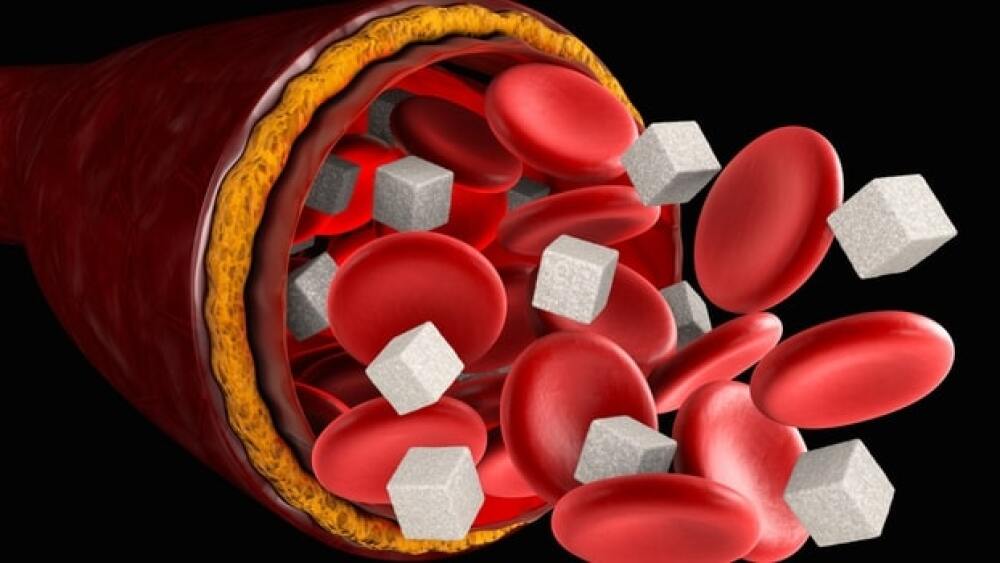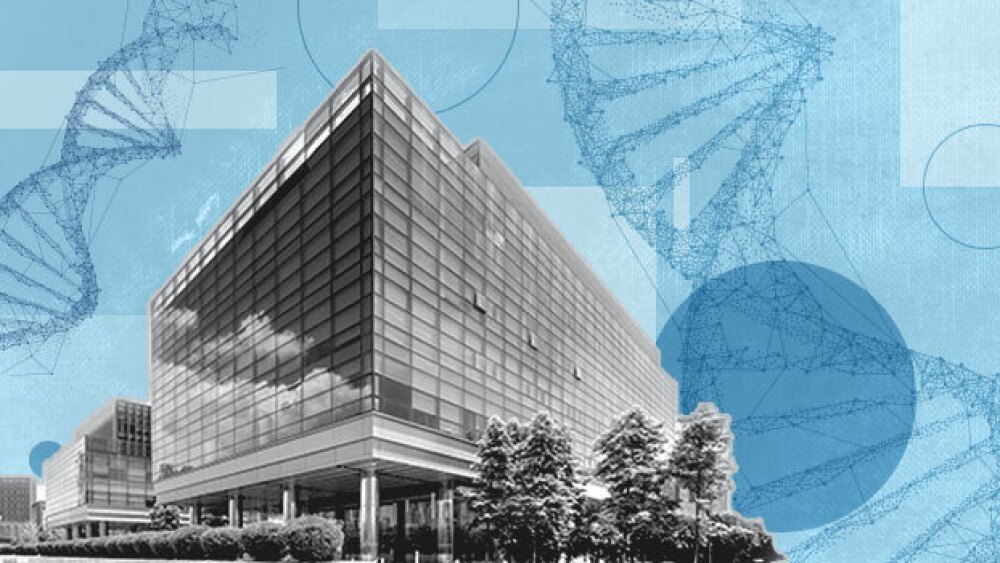In people with diabetes, periods of high blood sugar (hyperglycemia) can negatively impact their health years later, even if they get their blood sugar under control.
Hyperglycemia can pose health risks if it isn’t controlled properly.
Yes, even your metabolism has a memory – and it can hold a grudge for years. In people with diabetes, periods of high blood sugar (hyperglycemia) can negatively impact their health years later, even if they get their blood sugar under control. While this ‘metabolic memory’ phenomenon has been known for years, why it happens is poorly understood.
Rama Natarajan, Ph.D., Professor and Chair of the Department of Diabetes Complications & Metabolism at City of Hope, turned to our epigenome for the answer.
“We’ve shown the first link between DNA methylation in blood and stems cells, blood sugar history, and future development of complications,” said Natarajan. “This highlights the importance of good glycemic control to prevent long-term complications.”
The History of Metabolic Memory and Hyperglycemia
We now know hyperglycemia can lead to a variety of complications, including eye disease, kidney disease, nerve problems, heart disease, and stroke. But the relationship between strict blood sugar control and complication risk wasn’t well understood before the 1980s.
Back in 1983, the Diabetes Control and Complications Trial (DCCT) began tracking complications in 1,441 participants with type 1 diabetes. Researchers compared the occurrence of long-term complications between participants who tightly regulated their blood glucose levels to those who followed less strict standard regulation.
After 10 years, the difference was striking – the risk of diabetic complications was reduced in participants who tightly regulated their blood sugar but not in those following standard regulation. In other words, a person with higher blood sugar (hyperglycemia) had a higher risk of complications.
To continue following the DCCT patients, the Epidemiology of Diabetes Interventions and Complications (EDIC) follow-up trial began at the end of DCCT in 1993 and is ongoing. At the end of DCCT, all participants were encouraged to adopt strict blood sugar regulation; many in the standard regulation group did.
Despite blood sugar regulation being very similar in all the patients (as measured by hemoglobin A1c, called HbA1c), differences persisted between the two original intervention groups. The phenomenon of long-term effects from high or variable blood sugar control is called ‘metabolic memory’ (or the ‘legacy effect’ in type 2 diabetes).
Complications resulted from total high blood sugar exposure – it didn’t matter whether the person was exposed to slightly elevated levels over a long time or high levels over a short time.
So, what caused the sweet sugar molecule to become so destructive?
Sugary destruction
Extra sugar in your blood can interact with your cells, DNA, and proteins, adding itself onto things it shouldn’t be on through a process called glycation. In fact, HbA1c can be thought of as sugar-coated red blood cells.
The sugar-coated molecules can’t function as well, if at all, and the damage begins a self-perpetuating cycle. Not only do these damaged molecules stop working, they can also accumulate in the skin, eyes, and other organs, causing damage. Build-up of sugar-coated molecules can trigger the creation of harmful free radicals, causing oxidative stress and feeding a destructive cycle.
Although sugar can directly modify molecules, it can also trigger other epigenetic modifications. These modifications can control how genes are expressed, changing protein levels in cells.
“There hasn’t been a strong genetic association with diabetic complications – very few genetic mutations have been strongly linked to complications,” Natarajan explained. “But we knew the epigenome is what makes identical twins different and can have implications into why one gets diabetes or cancer and the other doesn’t. So, we turned our focus to epigenetics.”
Epigenetics and diabetes
Natarajan sought to explain the long-term sugary destruction wrought by hyperglycemia by searching the epigenome. Her lab specifically looks for one type of modification called DNA methylation, where a tiny molecule called a methyl group is added onto DNA.
“Epigenetics is the coating on top of genetics that can be altered by environmental influences,” Natarajan said. “We started focusing on the role of epigenetics in developing diabetes and its complications because we know that lifestyles, improper diet, lack of exercise, and even viruses can affect epigenetics.”
Natarajan’s lab began collaborating with the DCCT trial group, analyzing data collected through the trial for epigenetic clues to explain the ‘metabolic memory’ of complications. They found more modifications associated with active genes on proteins called histones that are wrapped by DNA in participants with regular blood sugar control compared to the strict controllers. Even more interesting was that many epigenetic DNA methylation variations between the two groups persisted through at least 17 years of follow-up in the EDIC study.
“These changes were in important genes related to complications, showing something about persistent epigenetic programming in peripheral blood cells,” commented Natarajan. “Previous high blood sugar episodes could be a key factor in why these genes were continually misbehaving.”
Now, Natarajan’s lab illuminated even more links between epigenetic changes, blood sugar history, and metabolic memory in their recent Nature Metabolism paper. Persistent epigenetic modifications of a few key genes were detected in participants with previously less regulated blood sugar who developed either retinopathy or nephropathy. They showed that DNA methylation is a key link between a patient’s HbA1c history, metabolic memory, and the development of future complications.
Many HbA1c-associated modifications were in stem cells and the blood cells they create. Even though blood cells are turned over relatively quickly, stem cells stick around for a long-time, so changes in stem cells can have long-term consequences.
“The important thing we found was the connection to stem cells,” explained Natarajan. “We’re asking how these changes alter inflammatory gene expression and how we can interrupt those pathways.”
Sugar-modified genes aren’t so sweet
Natarajan’s lab sorted through all the modified genes to find the most common modifications in participants with less strict blood sugar control. The most commonly modified gene coded for thioredoxin-interacting protein (TxNIP).
“TxNIP is not a new protein, but the discovery that its DNA methylation is altered by different glycemic control is new,” Natarajan added.
Thioredoxin-interacting protein is known to be highly regulated in certain pancreas cells, called beta cells, that release insulin. The plot thickened when high blood sugar (hyperglycemia) was found to increase TxNIP protein production. Even more interesting, high TxNIP protein levels make beta-cells dysfunctional, ultimately leading to their untimely death. So, high blood sugar triggers more TxNIP to be produced, possibly through epigenetic modifications of the TxNIP gene, which ultimately leads to the death of insulin-producing beta cells.
“Showing that the TxNIP gene can be epigenetically modified for years and years suggests that it could be one of the culprits causing long-term problems in diabetes,” Natarajan said.
The proteins that TxNIP interacts with, called thioredoxins, protect against oxidative stress. TxNIP can bind to and inactivate thioredoxin to increase oxidative stress by increasing reactive oxygen species (ROS). In mouse cells in a dish, high glucose exposure triggered increased ROS levels mediated by TxNIP, leading to oxidative stress. Oxidative stress can trigger cell and organ damage, so this could be one mechanism explaining diabetes-induced damage.
Her lab also found epigenetic changes in other genes related to inflammation and inflammation-related processes.
Next steps and clinical implications
Natarajan’s lab is continuing to study the link between blood sugar history, epigenetics, and other complications of diabetes. They are also expanding their scope, searching the entire genome for more epigenetic modifications linked with past blood sugar maintenance.
This study also lays the groundwork for further studies with meaningful clinical implications, including developing epigenetic biomarkers for diabetic complications. In the future, Natarajan says a simple blood test looking at key epigenetic modifications, along with HbA1c history, could be used to predict future risk of retinopathy, nephropathy, and neuropathy. This would allow the doctor to figure out who should have early and more aggressive treatment to mitigate complication risk.
While these studies were done in type 1 diabetes patients, other studies in type 2 diabetes patients have shown similar epigenetic modifications after history of higher blood sugar (hyperglycemia) levels.
Turning knowledge into potential drugs
What about doing something about the epigenetic modifications – can we remove them? As a matter of fact, yes!
There is an interesting new type of experimental drug on the horizon called epigenetic editing for hyperglycemia. The hot new technology CRISPR isn’t just for cutting out chunks of DNA or controlling genes – it can also be used to insert or remove epigenetic modifications. While this technology is still experimental and in early preclinical animal studies, the potential is very exciting.
A CRISPR/enzyme pair can be used – the CRISPR genetic material can hunt down the genetic spot you want to change; and the attached enzyme can snip or add certain molecules to the DNA, effectively removing or creating an epigenetic modification, thereby activating or silencing the targeted gene.
Enzymes such as methyltransferase or demethylase can add or remove methyl groups from genes. Because they just change what is on the gene or histone wrapped around it (not the genetic sequence itself), the gene itself isn’t tampered with, meaning there could be less genetic complications associated with CRISPR epigenetic editing.
“This is a futuristic thing,” Natarajan concluded. “The combination of genetics and epigenetics is going to be the future of personalized medicine.”





